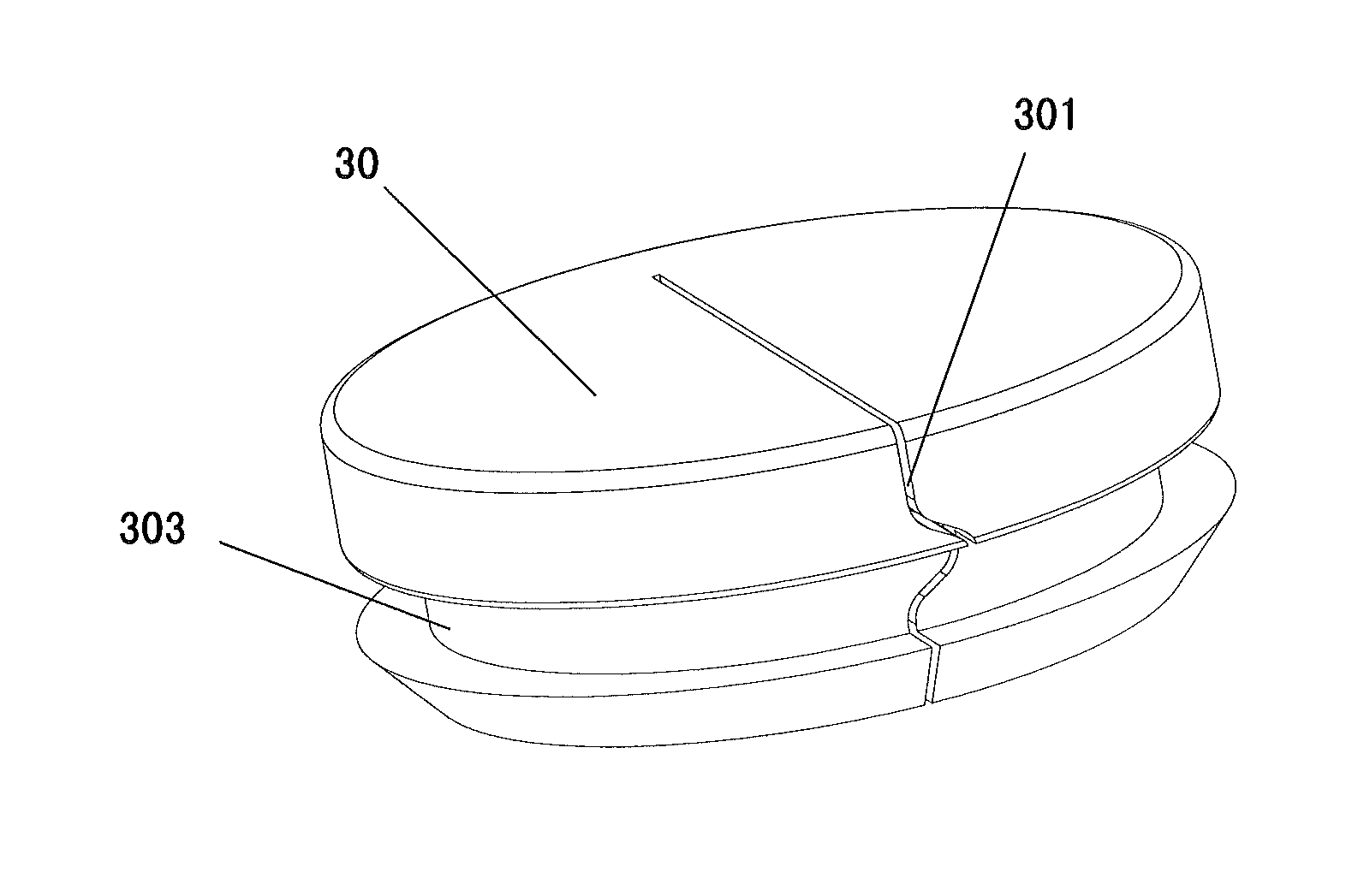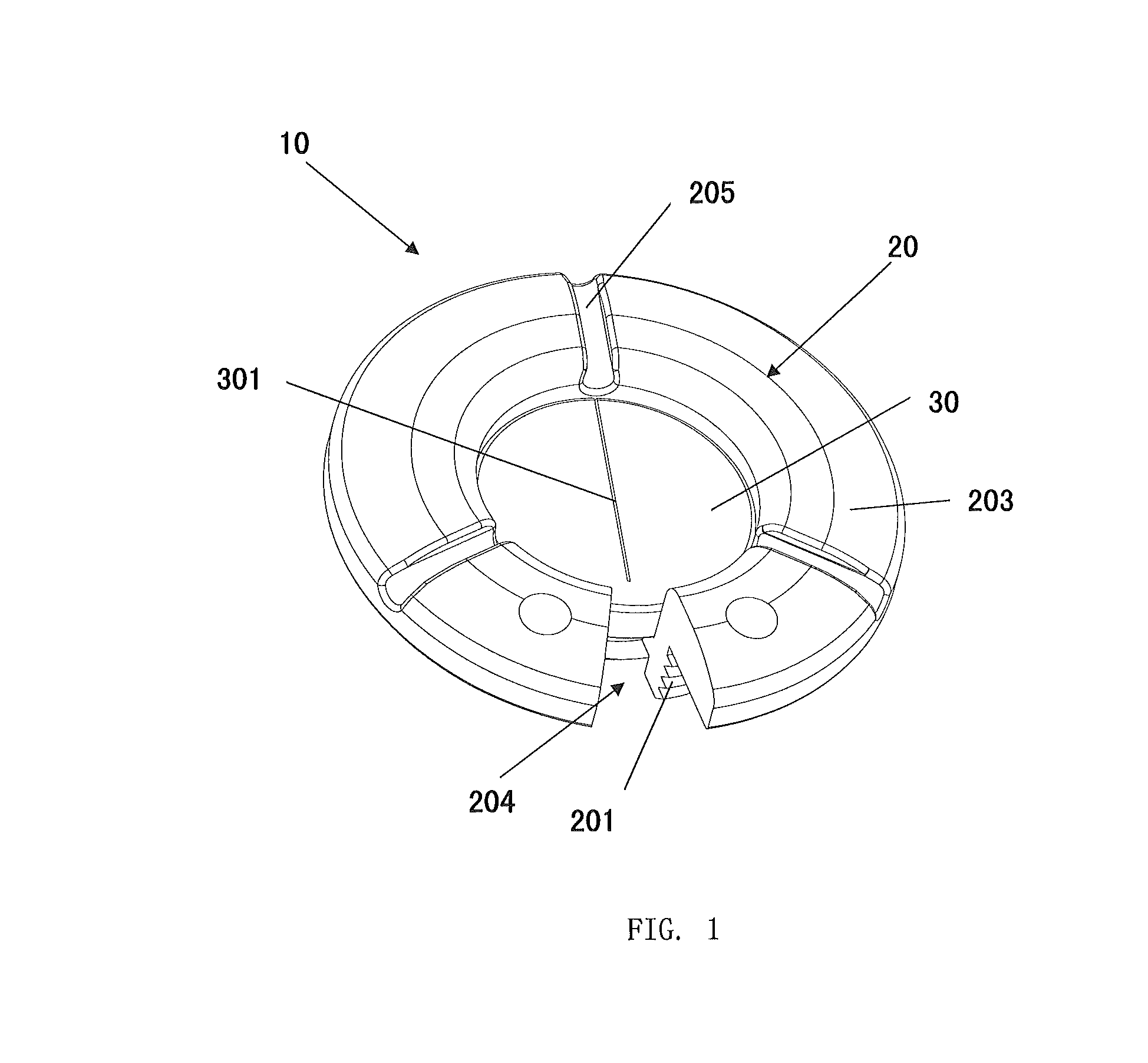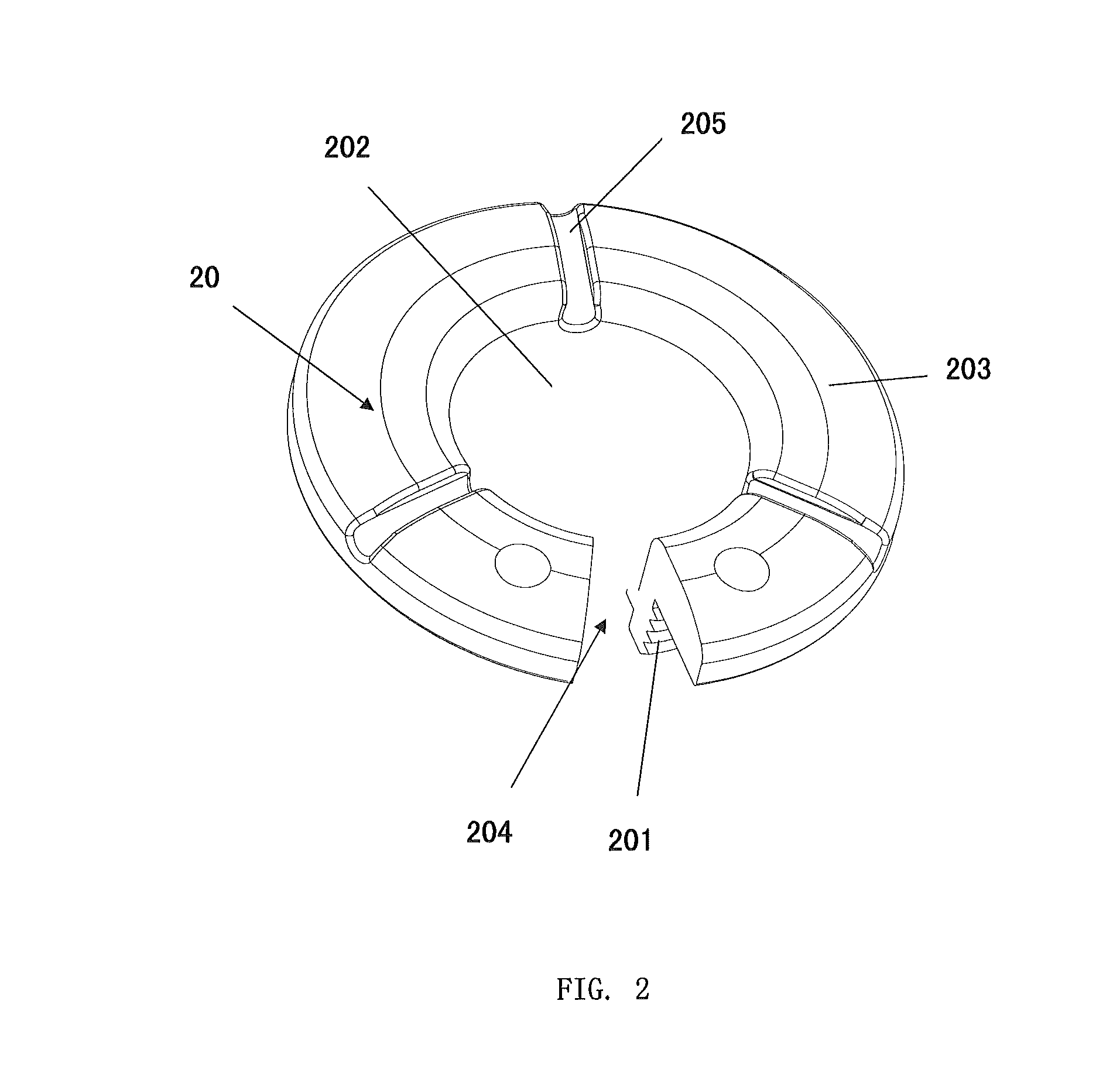Brain electrode lead anchoring device
a technology of lead anchoring device and brain electrode, which is applied in the direction of head electrode, internal electrode, therapy, etc., can solve the problems of dislodgement of the electrode from the desired stimulation site, discomfort or other complication of the patient, unexpected clinical consequences, etc., and achieve the effect of less protruding and less discomfort for the patien
- Summary
- Abstract
- Description
- Claims
- Application Information
AI Technical Summary
Benefits of technology
Problems solved by technology
Method used
Image
Examples
first embodiment
The First Embodiment
[0039]As shown in FIGS. 1-5, a device for anchoring brain leads 10 comprises a cranial ring 20 and a cranial septum 30. The anchoring ring 20 comprises a circular base 201 and a flange portion 203 joining together where the inner walls form an aperture 202 defining a passage of a lead and outer walls engage with a burr hole to secure said ring 20 to the cranium. The septum 30 is contained within the aperture 202 of the anchoring ring 20, comprising a slit 301 in its center to allow the brain lead to pass through.
[0040]In this embodiment, the slit 301 is a through-slit through which the clinician passes a trocar into the brain of patient for use. Alternatively, the slit can be shallow slit or deep slit. As shown in FIGS. 6 and 7, when in use, the clinician just need to use the trocar to pierce the shallow slit or deep slit so as to insert the brain lead to a pre-calculated depth through the inner hole of the trocar.
[0041]The through-slit and the deep / shallow slit ...
second embodiment
The Second Embodiment
[0047]As shown in FIGS. 8 to 11, the second embodiment differs from the first one in the slit 301. According to the second embodiment, one end of the slit 301 extends to the edge of the outside wall of the cranial septum 30 to form an edge-engaging through slit. However, the use of the device for anchoring a brain lead is different from that according to the first embodiment.
[0048]When in use, the cranial ring 20 is inserted to the cranial burr hole of the patient. The trocar is then inserted in place after cranial ring 20 mates well with the burr hole. Then, the trocar is anchored by a dedicated clamp while the nerve stimulation lead is inserted to a pre-calculated depth through the inner hole of the trocar. After the clinicians completes the adjustment and test, as shown in FIG. 7, the slit 301 of the cranium septum 30 is expanded sideways by hand to form a notch. The trocar which is aligned in position and contains the lead is clamped within the cranium septu...
third embodiment
The Third Embodiment
[0049]As shown in FIG. 12, the slit 301 of the cranium septum 30 in this embodiment is an edge-engaging curve slit rather than the “-” shaped edge-engaging straight slit. The operational steps for the clinicians are substantially the same as those in the second embodiment. When the cranium septum 30 is inserted into the lead aperture 202 of the cranial ring 20, the cranium septum 30 and the cranial ring 20 are well mated by the mating between the recessed portion 303 of the cranium septum 30 and the protrusion 206 of the ring 20. Meanwhile, the edge-engaging curve slit makes it easy to determine whether the cranium septum 30 is inserted in position.
PUM
 Login to View More
Login to View More Abstract
Description
Claims
Application Information
 Login to View More
Login to View More - R&D Engineer
- R&D Manager
- IP Professional
- Industry Leading Data Capabilities
- Powerful AI technology
- Patent DNA Extraction
Browse by: Latest US Patents, China's latest patents, Technical Efficacy Thesaurus, Application Domain, Technology Topic, Popular Technical Reports.
© 2024 PatSnap. All rights reserved.Legal|Privacy policy|Modern Slavery Act Transparency Statement|Sitemap|About US| Contact US: help@patsnap.com










